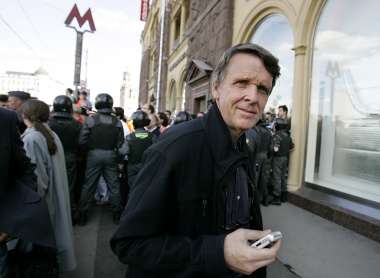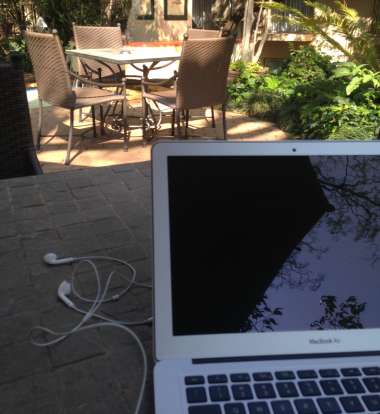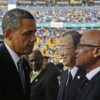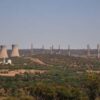Introduction
Like millions of others, I’m an admirer of the modern history of South Africa: its nonviolent transition from a racist system to multiracial democracy; Nelson Mandela’s decision after decades in prison to reject bitterness for reconciliation; its unique status as a country that voluntarily dismantled its nuclear weapons arsenal. Both the United States and South Africa champion nuclear nonproliferation and disarmament in public statements.
I was surprised, as a result, to discover the depth of the diplomatic discord between the United States and South Africa about an issue on which I expected the two countries to see eye-to-eye: the U.S. campaign to persuade countries to eliminate stocks of uranium that could be used to build nuclear bombs.
As National Security Editor R. Jeffrey Smith and I found after interviews with more than 65 officials, experts and other sources from both countries over a period of ten months, South Africa has about a quarter-ton of uranium from its former nuclear weapons program that could be readily used to build bombs.
While South African officials admit they currently have no practical use for this dangerous material, they’ve refused entreaties by both President George W. Bush and President Barack Obama to get rid of it. We wrote about these fractious conversations in three abbreviated articles published this week as part of our continuing investigative series entitled “Nuclear Waste.”
No current or former U.S. official we talked to expressed concern that South Africa wants to rebuild its nuclear weapons. But the United States has been pushing for decades to clear out stocks of highly-enriched uranium around the world, out of concern they could be stolen or seized, and ultimately be used by terrorists.
We also discovered that the United States considers South Africa’s stock of uranium as one of the most vulnerable in the world, because of its size and because the uranium exists in a form that is particularly easy to adapt for use in a weapon, including an unsophisticated one.
Another major concern, we learned, was that South Africa had reacted fairly passively to a November 2007 break-in at the Pelindaba nuclear research center, outside Pretoria, where the uranium is stored. While officials there publicly dismissed the incident as a botched burglary attempt, U.S. officials came to suspect that the tightly-organized raid targeted the uranium, with inside help.
So what would South African officials tell me when I finally met them face-to-face? What lay behind South Africa’s defiant stance? What was Pelindaba like? These were the questions I had in October when, after crossing the Atlantic Ocean and the Equator, I finally landed at O.R. Tambo International Airport in Johannesburg.

Q: What was South Africa like?
My view of the country was limited to Johannesburg, Pretoria and the scrubland around Pelindaba. My only previous visit was a one-day layover in the late 1990s, when I spent the night at a Johannesburg amusement park called Gold Reef City. (It was the only amusement park I have ever visited with its own gun shop, and the only one with its own working church: I woke up that Sunday morning to hymns sung in a beautiful African chorus.)
During my October trip, from my narrow view, the country seemed to be in the midst of a boom. Within a mile of sprawling shantytown, littered with blue plastic port-a-johns, was a gleaming new middle-class townhouse complex. I was told there were mansions in Soweto and saw gleaming new high-rises nearby. The expansive freeways, a general air of optimism, the semi-desert climate, the frankness and openness of most South Africans I met— blacks, whites and everyone else — all reminded me of the Southern California in the 1960s, where I was born and lived as a teenager. The country is very proud of its status as a multi-racial democracy, and I was struck by how integrated social gatherings were — more so, it seemed to me, than at many similar events in the United States.
Q: What is Pelindaba like?
The center, built during the apartheid era, has the half-deserted feel of a rural college campus during summer vacation. It’s spread over 118 acres, with more than 30 industrial and office buildings clustered for the most part on two adjacent hilltops. The rolling countryside is dotted with acacia trees and rocky outcrops. A monkey wandered into the hall outside the office where I was preparing for an interview, and I saw warthogs graze on several of Pelindaba’s lawns. We were told that because of the site’s 6.8-mile protective fence, many other animals take sanctuary there, including springbok, or antelope-gazelle, and various poisonous snakes. I’m happy to say I never ran into those.
Q: What did you do there?
I talked to South African officials about their highly-enriched uranium and about the security at the plant. They gave me a guided tour of the Safari-1 research reactor where the South African nuclear program was born. During the 1960s and 1970s, the United States supplied it with weapons-grade uranium fuel, even as South Africa launched its secret nuclear weapons program. (All of the American-supplied uranium has been returned.) After South Africa dismantled its bombs, it used some of its own highly-enriched uranium to make medical isotopes at Safari-1. But by 2009, South Africa had converted that reactor to operate with low-enriched fuel and so it no longer consumes significant amounts of the weapons material. Inside the reactor, I looked into the cooling pool and saw the incandescent-blue light of Cherenkov radiation, an eerie effect caused by electrons passing through the water at a speed faster than the speed of light through water. (Nothing moves faster than light in a vacuum of course.) I was not shown the vault where the uranium is held. I was told that was too sensitive.
Q: Was security tight at Pelindaba?
Maybe I just happened to arrive on days when the technology wasn’t working, but both times I had meetings inside the fence the fingerprint reader at the gate didn’t work and the guards had to wave me through. (I assume this was breaking the rules.) After being admitted on one of these visits, a South African colleague and I drove around unescorted through the site and at one point we had to ask directions. We never entered the most secure area, where the uranium vault is presumably located. But overall the experience didn’t inspire confidence.
Q: Don’t South African officials take the security of their uranium seriously?
There is an array of gates, guards and detectors protecting the perimeter of Pelindaba today, and on paper it is more secure than it was in 2007. But the United States worries that South African officials don’t take the issue as seriously as they should. Several South African officials told me they don’t regard nuclear terrorism as a major threat to their nation. In the United States, of course, prevention of a nuclear-armed terror attack is one of the highest — if not the highest — national security priorities.
Q: Were officials in South Africa willing to discuss these topics, or wary of engaging with a reporter from Washington?
South African nuclear officials were generally welcoming, while those in the foreign ministry and the security services were extremely difficult to reach. The president’s spokesman, Mac Maharaj, was very talkative and helpful on one aspect of the story, but he did not want to talk at all about the conflict with the United States over South Africa’s uranium.
I called a series of high-ranking police officials, each of which referred me to another, and none of whom would talk to me. I spent a frustrating hour driving through downtown Pretoria searching for the South African Police Service headquarters, which is located in what appears to be a commercial building, only to be rebuffed when I found the reception desk. Repeated requests for the police file in the case were ignored: I later learned, from an official at Pelindaba, that the case is still officially open.
South Africans hate to say no. In several cases, when I reached potential sources, they would politely ask me to call back later and then never answer my repeated calls.
Q: Is the security of nuclear explosives better in the United States?
Officials in the United States certainly worry about it more. Experts say there are gaps in every system, no matter how sophisticated, and at nuclear sites in particular the security should constantly be tested and improved. An unarmed 82-year-old nun and two other Catholic pacifists managed in July 2012 to scrawl graffiti on the walls of a huge warehouse for weapons uranium at the Y-12 complex, in Oak Ridge, Tennessee, after cutting their way through fences and evading what should have been some of the tightest security in the world. They staged their peaceful raid just over a year after South African officials – under U.S. pressure to ramp up security at Pelindaba — were given a tour of Y-12. “I was very impressed” by Y-12’s security during the tour, said one of the South Africans on that tour, speaking to me on condition his name not be used. “And then you read about this idiotic adventure. [With] the nun? Please. I had a bit of — what’s the German word? — schadenfreude.” The term means “joy at the misfortune of others.”
Q: You went to Geneva as well. Why?
I spent a day there to meet the man credited with creating Democratic South Africa’s nuclear arms control and nonproliferation policies, Ambassador Abdul Minty. He previously served as South Africa’s representative to the board of governors of the International Atomic Energy Agency in Vienna, and ran unsuccessfully in 2009 for the job of director general. Minty now represents South Africa at the many United Nations agencies based in Geneva. He very graciously invited me to tea in his office, located near the glittering lakefront. Minty is a tireless advocate for rapid global nuclear disarmament, who nevertheless questions U.S. nonproliferation goals on the ground that they impose too many restrictions and costs on the nuclear programs of the non-weapons states. He feels that efforts to restrict the spread of uranium and plutonium fuel technology, for example, are discriminatory. “Disarming the disarmed,” he has called it. At the same time, he says, the nuclear weapons states are moving too slowly toward disarmament, as they promised to do in the 1970 Non-Proliferation Treaty.

Q: Crime in South Africa gets a lot of publicity. Did you find that a problem?
The unemployment rate is 25 percent, and there is a wide gap between the rich and the poor. In a tradition that dates from the apartheid era, many middle-class people live behind high walls in gated and guarded communities, and there are frequent television advertisements for security gates. Several of those I spoke to told scary stories about hijackings and home invasions, which they said they had read about or heard from friends. But I never saw any crime, and never felt threatened during my two week stay.
Q: What did you do in your spare time?
I stayed in a hotel built to resemble a British hunting lodge, located in the Sandton neighborhood of Johannesburg, which boosters call “Africa’s richest square mile.” The restaurant served grilled steaks and Namibian beer. Some evenings, I walked to Nelson Mandela Square, which I was surprised to find lies in the center of a luxury shopping mall, and ate at an international chain restaurant under the gaze of a giant Mandela statue.
Read more in National Security
Nuclear Waste
The projected cost of the government’s most expensive nonproliferation effort rises again
Remember that startlingly high cost estimate for the MOX plant last year? It was still billions of dollars short, according to a new DOE study
Nuclear Waste
A break-in at a South African nuclear complex alarms Washington and strains relations years later
Two teams of raiders penetrated a site holding enough explosives to fuel six nuclear bombs, but no one was ever caught




Join the conversation
Show Comments